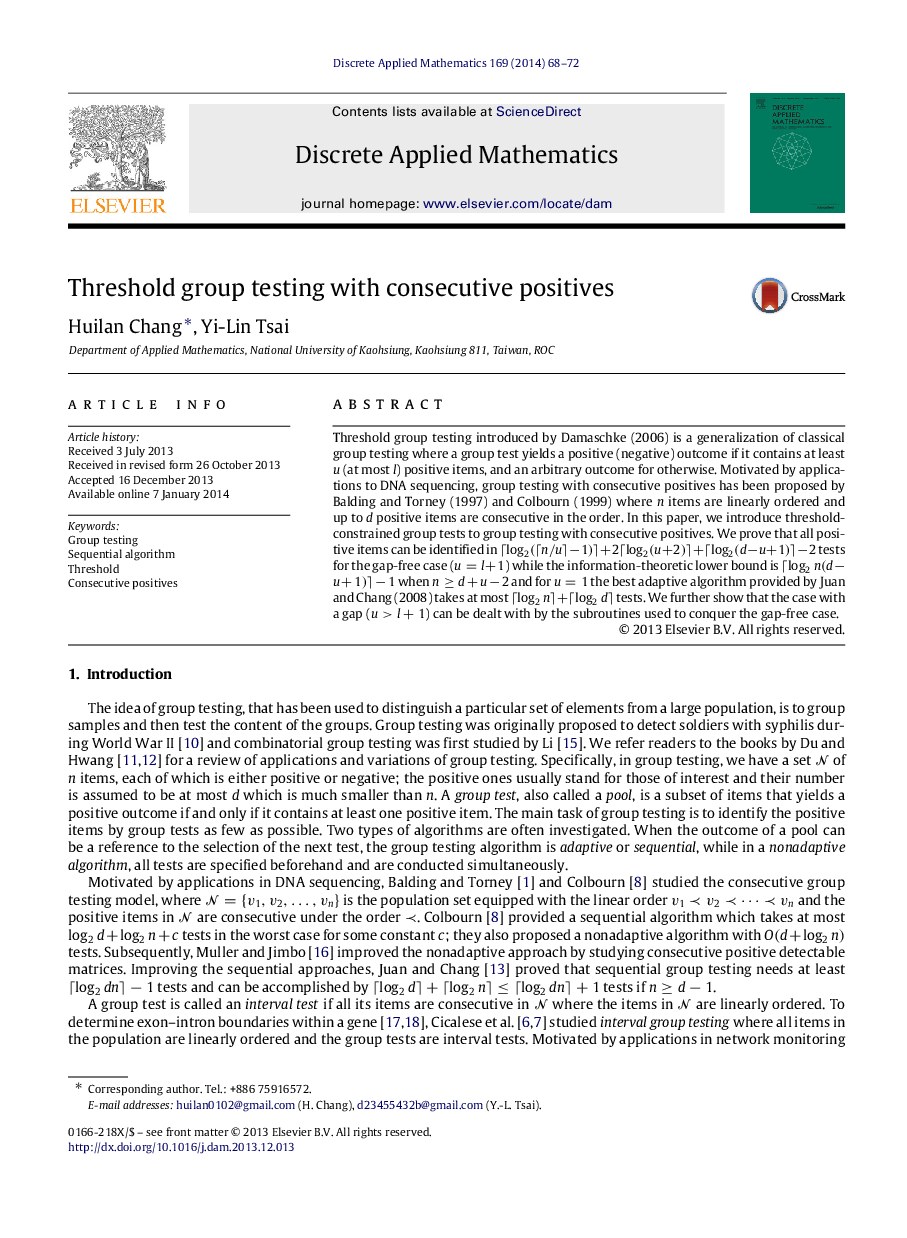| Article ID | Journal | Published Year | Pages | File Type |
|---|---|---|---|---|
| 419052 | Discrete Applied Mathematics | 2014 | 5 Pages |
Threshold group testing introduced by Damaschke (2006) is a generalization of classical group testing where a group test yields a positive (negative) outcome if it contains at least uu (at most ll) positive items, and an arbitrary outcome for otherwise. Motivated by applications to DNA sequencing, group testing with consecutive positives has been proposed by Balding and Torney (1997) and Colbourn (1999) where nn items are linearly ordered and up to dd positive items are consecutive in the order. In this paper, we introduce threshold-constrained group tests to group testing with consecutive positives. We prove that all positive items can be identified in ⌈log2(⌈n/u⌉−1)⌉+2⌈log2(u+2)⌉+⌈log2(d−u+1)⌉−2⌈log2(⌈n/u⌉−1)⌉+2⌈log2(u+2)⌉+⌈log2(d−u+1)⌉−2 tests for the gap-free case (u=l+1u=l+1) while the information-theoretic lower bound is ⌈log2n(d−u+1)⌉−1⌈log2n(d−u+1)⌉−1 when n≥d+u−2n≥d+u−2 and for u=1u=1 the best adaptive algorithm provided by Juan and Chang (2008) takes at most ⌈log2n⌉+⌈log2d⌉⌈log2n⌉+⌈log2d⌉ tests. We further show that the case with a gap (u>l+1u>l+1) can be dealt with by the subroutines used to conquer the gap-free case.
